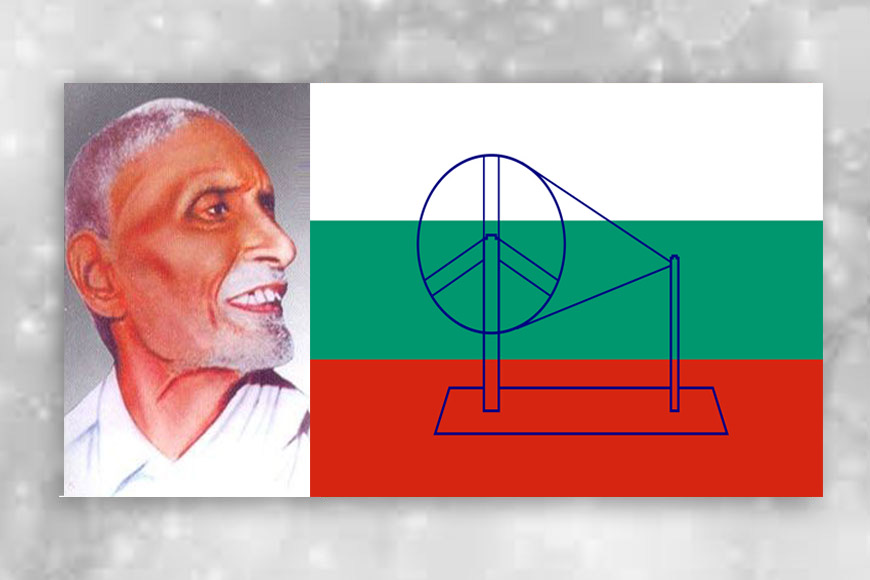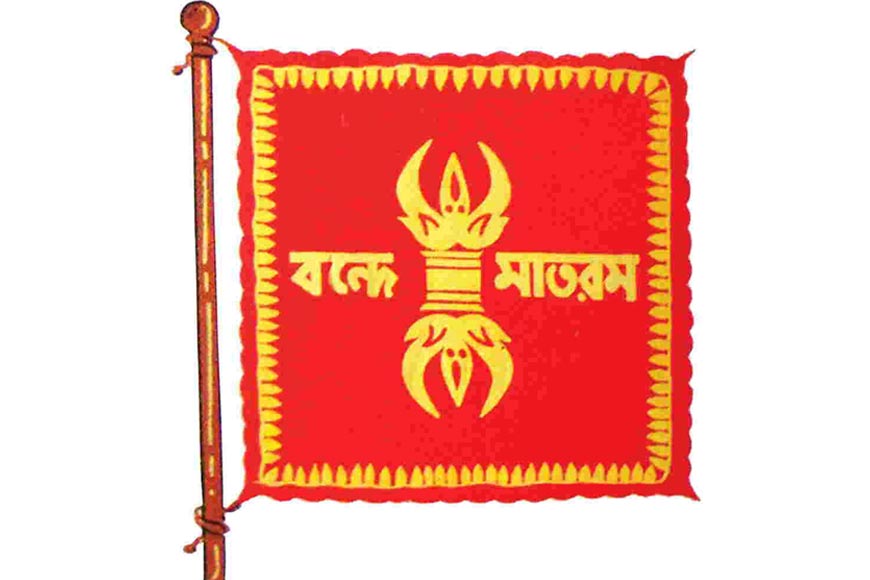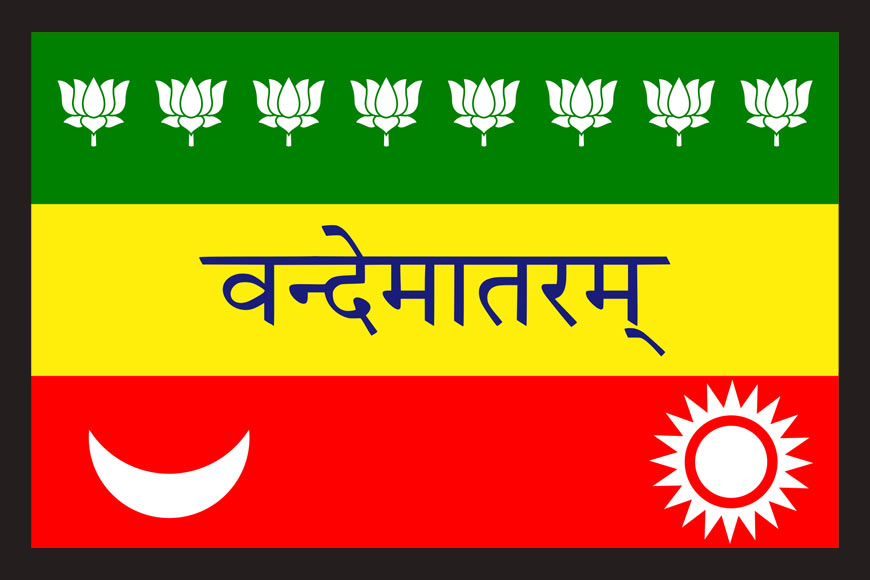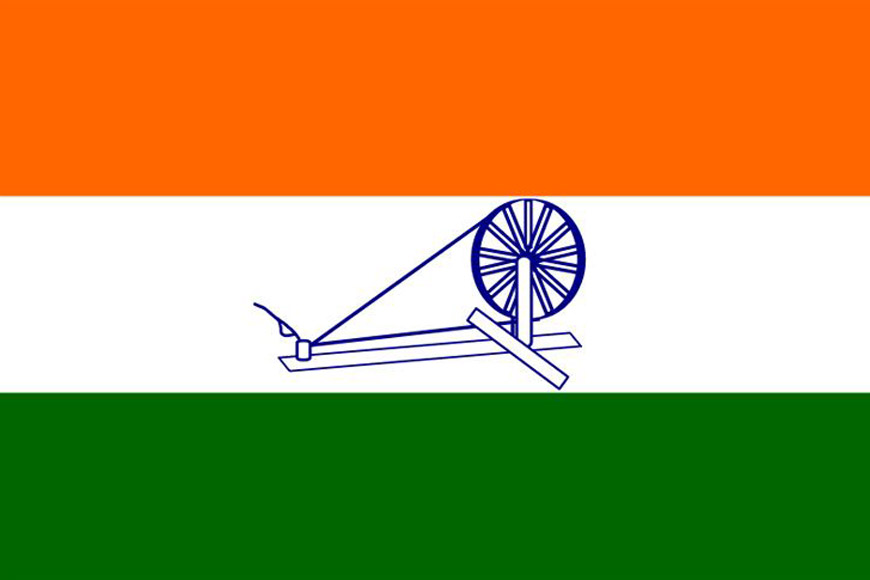75 years after Independence, can we stop promoting the Pingali Venkayya myth?

At just 75 years old, India is still a young nation. When we say India, we mean the political entity known as India created, and divided by, the British. The geographical piece of land itself, of course, is many thousands of years old. But since we are celebrating 75 years of India’s Independence from British rule, we are not referring to that age-old land.
One of the most important aspects of the celebration, of course, is the beloved Indian tricolour. And for some reason, most Indians are still taught the myth that this tricolour was designed by Pingali Venkayya, a freedom fighter from near Machilipatnam in Andhra Pradesh.
 Flag Design by Sister Nivedita - 1904
Flag Design by Sister Nivedita - 1904
This, despite the fact that the first serious attempt to create a pan-Indian flag was made by Sister Nivedita in Calcutta in 1904. If Venkayya’s contribution was so important, how was it that he was allowed to die quietly in poverty in 1963, largely forgotten by the country and his own party, the Congress?
In fact, Venkayya’s early attempts to design a national flag, featuring the British Union Jack in one corner, were treated somewhat coldly by Mahatma Gandhi himself. In an article titled ‘The National Flag’ published in Young India in 1921, he wrote, “While I have always admired the persistent zeal in which Mr Venkayya has prosecuted the cause of a national flag at every session of the Congress for the past four years, he has never (been) able to enthuse me; and in his designs I saw nothing to stir the nation to its depths…”
Before the Vijayawada session of the Congress in April 1921, Gandhiji sent Venkayya back to the drawing board, and the latter came up with a bicolour design of vertical red and green bands, symbolising Hinduism and Islam, with a charkha in the foreground. While Gandhiji added a white band to the flag to symbolise all other religions, the idea of the charkha, as records show, came from eminent educationist Lala Hansraj, and Venkayya simply followed this brief. Interestingly, the suggestion to include saffron (bhagwa or gerua), and to change the charkha to a mace (gada), came from Sanskrit College, Calcutta.
To give credit where it is due, Venkayya was one of those who enthusiastically persevered with the idea that India needed a flag of its own, and was instrumental in convincing the Congress of this need post 1921, as the demand for freedom gained momentum.
However, as already mentioned, Sister Nivedita made the first big push for a national flag in 1904-05, with the ‘vajra’ or thunderbolt as its mainstay. In Buddhist philosophy, the vajra stands for selfless humanity, while Hindus know it as the weapon fashioned out of the ascetic Dadhichi’s bones for Lord Indra, and the idea of the vajra first came to Nivedita during a trip to Bodhgaya in 1904. In 1909, using the pseudonym RS, Nivedita wrote an illustrated essay titled ‘The Vajra as a National Flag’ for the November edition of Modern Review, which is quite possibly the first published work on India’s national flag.
 August 7, 1906, at Parsi Bagan Calcutta
August 7, 1906, at Parsi Bagan Calcutta
The first Indian tricolour in green, yellow, and red also came from Calcutta. On August 7, 1906, at Parsi Bagan (Sadhana Sarkar Udyan today), Bhupendranath Basu handed the flag to nationalist leader Surendranath Banerjee, who hoisted it to the accompaniment of 101 explosives going off.
Designed by freedom fighter Sukumar Mitra, the flag was adopted following the addition of eight white lotuses, the sun and moon, and ‘Vande Mataram’ across the centre in Devnagri script. This flag was even hoisted at the 1906 Calcutta session of the Congress by Dadabhai Naoroji. Very interestingly, a young Venkayya was present at the 1906 session as a Congress volunteer, and was overwhelmed by the idea of a national flag, as well as a flag symbolising the Congress party.
On August 22, 1907, at the International Socialist Congress in Stuttgart, Germany, Madame Bhikaji Cama displayed this flag, though no mention was made of the flag’s origin or its designers. So even the idea of a bicolour and tricolour was not new by the time Venkayya began his task.
 Indian flag - 1931
Indian flag - 1931
Finally in 1931, the Congress decided that a Flag Committee was needed to finalise a flag acceptable to all. As far as can be ascertained, in an article titled ‘The National Flag’ published in Modern Review in June 1931, Professor Suniti Kumar Chatterji cautioned that any explanation of the colours of the national flag as symbolic of Hindus, Muslims, Christians or any other community should be regarded as “pernicious and anti-national”. He also pointed out that red, white, and green already featured in the flags of at least four countries: Persia, Italy, Bulgaria, and Mexico. To avoid confusion, he suggested vertical bands of red, green, and ochre or saffron, with a three- or four-spoked wheel (or four- or eight-petalled white lotus) in the central field.
By now, Venkayya, the ‘designer’ of the original flag, was well out of the picture. The new flag was to substitute saffron for red, with white in the middle and green underneath, and the charkha in navy blue in the foreground.
It is impossible to incorporate every twist and turn in the story into one article, but with 75 years gone by, the least we can do is to call the Indian tricolour a collaborative effort, and not one man’s creation.
Information inputs: Shri Sekhar Chakrabarti, vexillologist, writer, researcher










